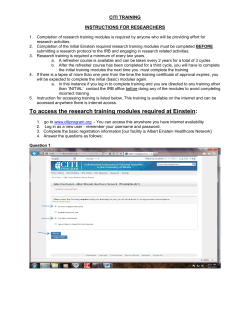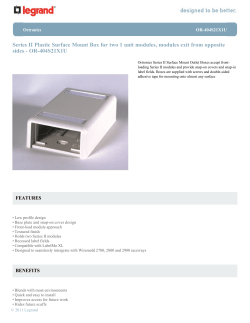
BM-xx00-RM1K Wireless I/O - FAQ Sheet
Wireless I/O FAQ Does this Wireless I/O System follow a certain communication protocol? No, it’s simply an I/O mirroring solution. What comes in, goes out. It does not speak Modbus or any other protocol. Inputs received are replicated on the end of the radio spectrum as outputs. What types of I/O modules are available? a. Digital/discrete b. Analog 4-20 mA c. Analog 0-10 V Does it require any software for programming or configuration? No, it requires absolutely no software. It is ready out of the box to install. Is it offered in 900 MHz license-free ISM band? Yes, both US and International versions are available. Is it offered in 2.4 GHz license-free ISM band? Yes, both US and International versions are available. At max RF power of 250 mW, what is the expected RF range? Up to 4 miles using 900 MHz and up to 1 mile using 2.4 GHz. Does this system support point-to-multipoint communication? No, the Radios come paired and secured and is meant for point-to-point applications only. How many I/O modules can be connected to a Radio Module? a. Digital: up to 16 pairs. b. 4-20 mA: up to 5 pairs when using internal loop power. c. 0-10 V: up to 8 pairs. d. When using more than a 5-Module Combination per Radio, use the Power Budget Calculator to determine max number of Modules per system. Copyright ProSoft Technology 2015 How do I setup each I/O module once connected to the Radio module? Use a small flat screwdriver (technician’s screwdriver) and turn ID switch to select desired ID number. Be sure the matching module at the other Radio station is also assigned to the same device ID. Does the Radio module automatically detect new I/O modules when connected to the DataRail? Yes, but only during hardware reset by power cycling the Radio module. What is the mini USB port on the Radio module used for? The mini USB port is designated to plug in a PC running WIO Software Tool for users wanting to take full advantage of all the features this system has to offer. Can this Wireless I/O be used in hazardous locations? Yes, the system can be used in UL Class 1, Division 2 or ATEX Zone 2 locations. In case of an emergency, how can I manually force this system into FailSafe condition for managing outputs (ESD)? The Radio Module provides a discrete input for connecting a dry contact switch. When dry contact is closed or active, the Radio Module will instantly operate in the FailSafe mode. User can configure the Discrete Module by manipulating the FailSafe dip switches located directly on the device. Analog Modules defaults to lowest setting under FailSafe condition: 4 mA or 0 V. What types of features are available with the Advance User Interface (UI)? a. Perform RF strength test (RSSI), change RF channel, adjust RF power level to balance power consumption and performance, change RF timeout interval, force local outputs, or set FailSafe settings for Analog outputs. When using an external fuse for the Radio module, what happens when power is reverse polarity connected? a. The power input terminal contains a reverse polarity protection (schottky diode). How can I obtain tech support or RMA? a. Please email us at support@prosoft-technology.com or give us a call at the appropriate number below to begin the service process. United States: 661-716-5100 Asia Pacific Copyright ProSoft Technology 2015 Malaysia office: +603.7724.2080 China Office: +86.21.5187.7337 Europe, Middle East, Africa France Office: +33 (0)5.34.36.87.20 Middle East & Africa: +971 (0)4.214.6911 Latin America Brazil: +55-11-5084-5178 Mexico & Central America: +52-222-264-1814 Copyright ProSoft Technology 2015
© Copyright 2025










